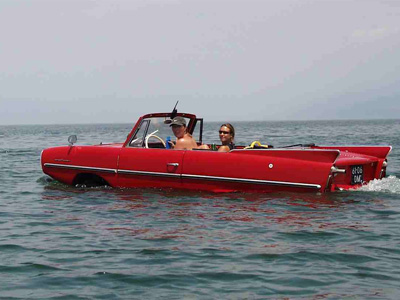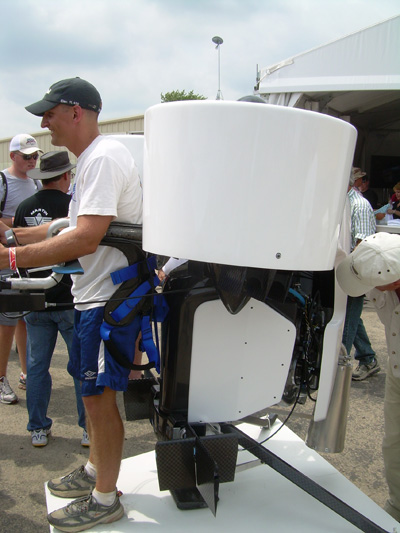It’s amazing the turns that a newsroom conversation can take. A few minutes ago I was engaged in a conversation about Twitter and technology and the next thing I know, editor Mike Mulcahy and I were excitedly recalling the phenomenon of the Amphicar.
The Amphicar, in our youth, was what Twitter is today — the next big thing. In my hometown, the old guy who owned the local radio station (where I would later work) regularly drove around town in his Amphicar, which allowed people to drive down the road, and into the lake if there was any sort of good reason to do so.

The Amphicar never caught on because (a) Other than for a few months in the spring, when’s the last time you really needed your car to splash into a river or lake? And (b) there weren’t enough crazy old guys in America’s small towns interested in showing off their latest technology.
An MIT student has an aerial version of the Amphicar in mind. Carl Dietrich wants to be able to fly a plane to an airport, convert it into a car, and drive away, BusinessWeek reported a few years ago.
But, it’s already been done.

In the 1940s, the Aerocar was developed and sold for about $25,000. It never caught on. Go figure.
A testament to the continuing spirit of America is there’s always a “next big thing,” that has no prayer of actually becoming the next big thing, that some people will always want to buy simply because for that brief moment in time, it might be.
We saw this last week at the big AirVenture show at Oshkosh. Virtually every flying machine in the world shows up each year at Oshkosh. But what was the big draw this year? The jetpack:

The company that is trying to develop the jetpack had the biggest crowds at the show. As envisioned, it’ll fly on regular old gasoline for about a half hour. At a public demonstration, the “pilot” got about 3 feet off the ground, and then thanked everyone for coming. That might be enough to separate a few crazy old guys from their money.
It was a defining moment, perhaps, for the jetpack. And a familiar one for followers of the Amphicar. A Web site dedicated to the beast carried this story:
We lived in Hoboken NJ from 1960-68, and the Amphicar importer was about 10 miles west in Moonachie – acres covered with Amphicars. We had a 1959 Triumph TR10 (Standard, predecessor of the Herald) at the time, nearly the same engine.
The Amphicar importer decided to market the vehicle as an ideal way to beat the rush-hour traffic across the Hudson River from NJ to NYC. They announced that they would show how the Amphicar could simply drive to the river, cross it as a boat, and drive up into Manhattan. Lots of folks from the Press were at the ramp in Weehawken NJ when 2 guys from the importer drove down a boat ramp and sailed east. The problem is, even on a calm day, the Hudson has about a 1′ chop, and the water began to splash over the windowsills. About 50 yards out, the driver made a u-turn, drove back out onto the boat ramp, and kept going. There was no further promotion of the Amphicar as a cross-Hudson commuter vehicle.
The demise of the “next big thing” has a universal underpinning: They don’t work and have no practical purpose.
Beat that, Twitter.
